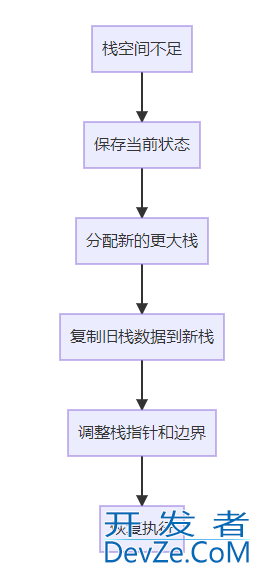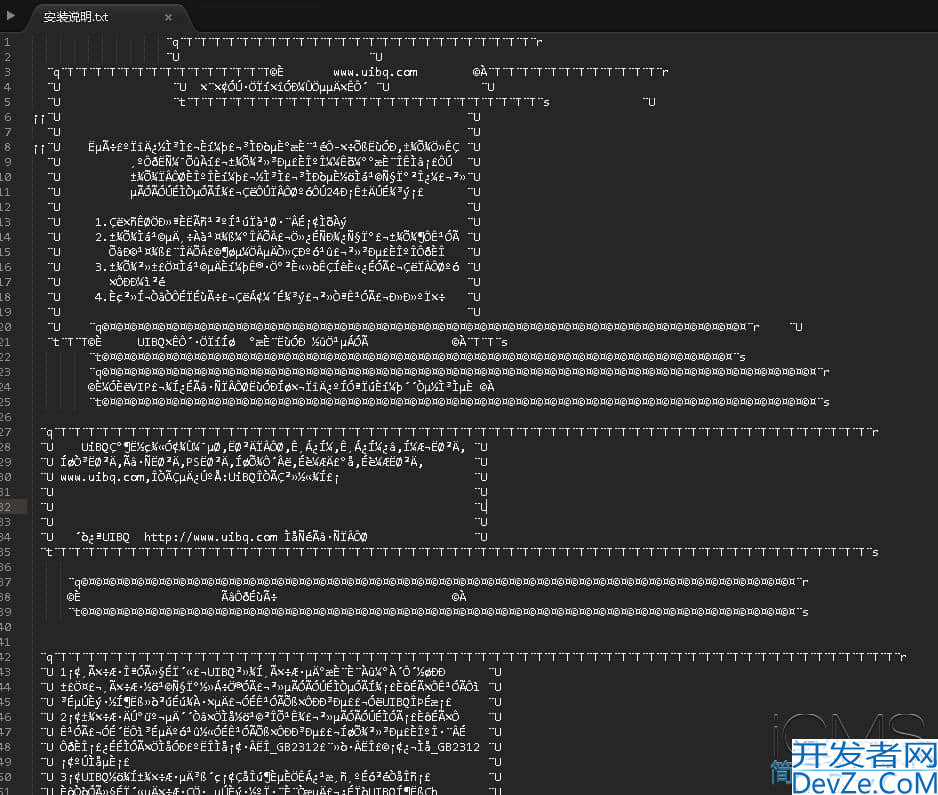SpringBoot自定义RestTemplate的拦截器链的实战指南
目录
- 引言
- 一、为什么需要拦截器链?
- 二、RestTemplate拦截器基础
- 2.1 核心接口:ClientHttpRequestInterceptor
- 2.2 第一个拦截器:日志拦截器
- 三、拦截器链实战:从单拦截器到多拦截器协同
- 3.1 注册拦截器链
- 3.2 核心拦截器实现
- (1)认证拦截器:自动添加Token
- (2)重试拦截器:失败自动重试
- 四、实战踩坑指南
- 4.1 响应流只能读取一次问题
- 4.2 拦截器顺序不当导致功能异常
- 4.3 线程安全问题
- 五、测试示例
- 5.1 测试接口
- 5.2 依赖与配置
- 六、总结与扩展
- 核心要点
引言
在项目开发中,RestTemplate作为Spring提供的HTTP客户端工具,经常用于访问内部或三方服务。
但在实际项目中,我们往往需要对请求进行统一处理:比如添加认证Token、记录请求日志、设置超时时间、实现失败重试等。
如果每个接口调用都手动处理这些逻辑,不仅代码冗余,还容易出错。
一、为什么需要拦截器链?
先看一个场景:假设我们的支付服务需要调用第三方支付接口,每次请求都要做这些事
- 添加
Authorization请求头(认证Token) - 记录请求URL、参数、耗时(日志审计)
- 设置3秒超时时间(防止阻塞)
- 失败时重试2次(网络抖动处理)
如果没有拦截器,代码会写成这样:
// 调用第三方支付接口
public String createOrder(String orderId) {
// 1. 创建RestTemplate(重复10次)
RestTemplate restTemplate = new RestTemplate();
// 2. 设置超时(重复10次)
SimpleClientHttpRequestFactory factory = new SimpleClientHttpRequestFactory();
factory.setConnectTimeout(3000);
factory.setReadTimeout(3000);
restTemplate.setRequestFactory(factory);
// 3. 添加认证头(重复10次)
HttpHeaders headers = new HttpHeaders();
headers.set("Authorization", "Bearer " + getToken());
HttpEntity<String> entity = new HttpEntity<>(headers);
// 4. 记录日志(重复10次)
log.info("请求支付接口: {}", orderId);
try {
String result = restTemplate.postForObject(PAY_URL, entity, String.class);
log.info("请求成功: {}", result);
return result;
} catch (Exception e) {
log.error("请求失败", e);
// 5. 重试(重复10次)
for (int i = 0; i < 2; i++) {
try {
return restTemplate.postForObject(PAY_URL, entity, String.class);
} catch (Exception ex) { /* 重试逻辑 */ }
}
throw e;
}
}
这段代码的问题很明显:重复逻辑散落在各个接口调用中,维护成本极高。如果有10个接口需要调用第三方服务,就要写10遍相同的代码。
而拦截器链能把这些通用逻辑抽离成独立组件,按顺序串联执行,实现“一次定义,处处复用”。
// 重构后:一行搞定所有通用逻辑 return restTemplate.postForObject(PAY_URL, entity, String.class);
二、RestTemplate拦截器基础
2.1 核心接口:ClientHttpRequestInterceptor
Spring提供了ClientHttpRequestInterhttp://www.devze.comceptor接口,所有自定义拦截器都要实现它
public interface ClientHttpRequestInterceptor {
// request:请求对象(可修改请求头、参数)
// body:请求体字节数组
// execution:执行器(用于调用下一个拦截器)
ClientHttpResponse intercept(HttpRequest request, byte[] body, ClientHttpRequestExecution execution) throws IOException;
}
拦截器工作流程:
- 拦截器可以修改请求(如添加头信息、修改参数)
- 通过
execution.execute(request, body)调用下一个拦截器 - 最终执行器会发送实际HTTP请求,返回响应
- 拦截器可以处理响应(如记录日志、解析响应体)
2.2 第一个拦截器:日志拦截器
先实现一个打印请求响应日志的拦截器,这是项目中最常用的功能:
import lombok.extern.slf4j.Slf4j;
import org.springframework.http.HttpRequest;
import org.springframework.http.client.ClientHttpRequestExecution;
import org.springframework.http.client.ClientHttpRequestInterceptor;
import org.LHdwgqrlQAspringframework.http.client.ClientHttpResponse;
import org.springframework.util.StreamUtils;
import Java.io.IOException;
import java.nio.charset.StandardCharsets;
@Slf4j
public class LoggingInterceptor implements ClientHttpRequestInterceptor {
@Override
public ClientHttpResponse intercept(HttpRequest request, byte[] body, ClientHttpRequestExecution execution) throws IOException {
// 1. 记录请求信息
long start = System.currentTimeMillis();
log.info("===== 请求开始 =====");
log.info("URL: {}", request.getURI());
log.info("Method: {}", request.getMethod());
log.info("Headers: {}", request.getHeaders());
log.info("Body: {}", new String(body, StandardCharsets.UTF_8));
// 2. 执行下一个拦截器(关键!不调用会中断链条)
ClientHttpResponse response = execution.execute(request, body);
// 3. 记录响应信息
String responseBody = StreamUtils.copyToString(response.getBody(), StandardCharsets.UTF_8);
log.info("===== 请求结束 =====");
log.info("Status: {}", response.getStatusCode());
log.info("Headers: {}", response.getHeaders());
log.info("Body: {}", responseBody);
log.info("耗时: {}ms", System.currentTimeMillis() - start);
return response;
}
}
关键点:
execution.execute(...)是调用链的核心,必须调用才能继续执行- 响应流
response.getBody()只能读取一次,如需多次处理需缓存(后面会讲解决方案)
三、拦截器链实战:从单拦截器到多拦截器协同
3.1 注册拦截器链
SpringBoot中通过RestTemplate.setInterceptors()注册多个拦截器,形成调用链:
import org.springframework.context.annotation.Bean;
import org.springframework.context.annotation.Configuration;
import org.springframework.http.client.BufferingClientHttpRequestFactory;
import org.springframework.http.client.ClientHttpRequestInterceptor;
import org.springframework.http.client.SimpleClientHttpRequestFactory;
import org.springframework.web.client.RestTemplate;
import java.util.ArrayList;
import java.util.List;
@Configuration
public class RestTemplateConfig {
@Bean
public RestTemplate customRestTemplate() {
// 1. 创建拦截器列表(顺序很重要!)
List<ClientHttpRequestInterceptor> interceptors = new ArrayList<>();
interceptors.add(new AuthInterceptor()); // 1. 认证拦截器(先加请求头)
interceptors.add(new LoggingInterceptor()); // 2. 日志拦截器(记录完整请求)
interceptors.add(new RetryInterceptor(2)); // 3. 重试拦截器(最后处理失败)
// 2. 创建RestTemplate并设置拦截器
RestTemplate restTemplate = new RestTemplate();
restTemplate.setInterceptors(interceptors);
// 3. 解决响应流只能读取一次的问题(关键配置!)
SimpleClientHttpRequestFactory factory = new SimpleClientHttpRequestFactory();
factory.setConnectTimeout(3000); // 连接超时3秒
factory.setReadTimeout(3000); // 读取超时3秒
restTemplate.setRequestFactory(new BufferingClientHttpRequestFactory(factory));
return restTemplate;
}
}
拦截器执行顺序:按添加顺序执行(像排队一样),上述示例的执行流程是:
AuthInterceptor → LoggingInterceptor → RetryInterceptor → 实际请求 → RetryInterceptor → LoggingInterceptor → AuthInterceptor
3.2 核心拦截器实现
(1)认证拦截器:自动添加Token
import org.springframework.http.HttpHeaders;
import org.springframework.http.HttpRequest;
import org.springframework.http.client.ClientHttpRequestExecution;
import org.springframework.http.client.ClientHttpRequestInterceptor;
import org.springframework.http.client.ClientHttpResponse;
import java.io.IOException;
public class AuthInterceptor implements ClientHttpRequestInterceptor {
@Override
public ClientHttpResponse intercept(HttpRequest request, byte[] body, ClientHttpRequestExecution execution) throws IOException {
// 1. 从缓存获取Token(实际项目可能从Redis或配置中心获取)
http://www.devze.comString token = getToken();
// 2. 添加Authorization请求头
HttpHeaders headers = request.getHeaders();
headers.set("Authorization", "Bearer " + token); // Bearer认证格式
// 3. 传递给下一个拦截器
return execution.execute(request, body);
}
// 模拟从缓存获取Token
private String getToken() {
return "eyJhbGciOiJIUzI1NiIsInR5cCI6IkpXVCJ9..."; // 实际项目是真实Token
}
}
(2)重试拦截器:失败自动重试
package com.example.rest;
import lombok.extern.slf4j.Slf4j;
import org.springframework.http.HttpRequest;
import org.springframework.http.client.ClientHttpRequestExecution;
import org.springframework.http.client.ClientHttpRequestInterceptor;
import org.springframework.http.client.ClientHttpResponse;
import org.springframework.web.client.HttpStatusCodeException;
import java.io.IOException;
@Slf4j
public class RetryInterceptor implements ClientHttpRequestInterceptor {
private final int maxRetries; // 最大重试次数
public RetryInterceptor(int maxRetries) {
this.maxRetries = maxRetries;
}
@Override
public ClientHttpResponse intercept(HttpRequest request, byte[] body, ClientHttpRequestExecution execution) throws IOException {
int retryCount = 0;
while (true) {
try {
// 执行请求(调用下一个拦截器或实际请求)
return execution.execute(request, body);
} catch (HttpStatusCodeException e) {
// 只对5xx服务器错误重试(业务错误不重试)
if (e.getStatusCode().is5xxServerError() && retryCount < maxRetries) {
retryCount++;
log.warn("服务器错误,开始第{}次重试,状态码:{}", retryCount, e.getStatusCode());
continue;
}
throw e; // 非5xx错误或达到最大重试次数
} catch (IOException e) {
// 网络异常重试(如连接超时、DNS解析失败)
if (retryCount < maxRetries) {
retryCount++;
log.warn("网络异常,开始第{}次重试", retryCount, e);
continue;
}
throw e;
}
}
}
}
四、实战踩坑指南
4.1 响应流只能读取一次问题
现象:日志拦截器读取响应体后,后续拦截器再读会读取到空数据。
原因:响应流默认是一次性的,读完就关闭了。解决方案:用BufferingClientHttpRequestFactory包装请求工厂,缓存响应流:
// 创建支持响应缓存的工厂(已在3.1节配置中体现) SimpleClientHttpRequestFactory factory = new SimpleClientHttpRequestFactory(); BufferingClientHttpRequestFactory bufferingFactory = new BufferingClientHttpRequestFactory(factory); restTemplate.setRequestFactory(bufferingFactory);
4.2 拦截器顺序不当导致功能异常
反例:把LoggingInterceptor放在AuthInterceptor前面,日志中会看不到Authorization头,因为日志拦截器先执行时还没添加认证头。
正确顺序(按职责划分):
- 1. 前置处理拦截器:认证、加密、参数修改
- 2. 日志拦截器:记录完整请求
- 3. 重试/降级拦截器:处理异常情况
4.3 线程安全问题
RestTemplate是线程安全的,但拦截器若有成员变量,需确保线程安全!
错误示例
public class BadInterceptor javascriptimplements ClientHttpRequestInterceptor {
private int count = 0; // ❌ 多线程共享变量,会导致计数错误
@Override
public ClientHttpResponse intercept(...) {
count++; // 危险!多线程下count值不准
// ...
}
}
解决方案
- 拦截器避免定义可变成员变量
- 必须使用时,用
ThreadLocal隔离线程状态
五、测试示例
5.1 测试接口
package com.example.rest;
import org.springframework.beans.factory.annotation.Autowired;
import org.springframework.web.bind.annotation.GetMapping;
import org.springframework.web.bind.annotation.RestController;
import org.springframework.web.client.RestTemplate;
@RestController
public class TestController {
@Autowired
private RestTemplate customRestTemplate; // 注入自定义的RestTemplate
@GetMapping("/call-api")
public String callThirdApi() {
// 调用第三方API,拦截器自动处理认证、日志、重试
return customRestTemplate.getForObject("http://localhost:8080/mock-third-api", String.class);
}
// 模拟一个三方接口
@GetMapping("/mock-third-api")
public String mockThirdApi() {
return "hello";
}
}
5.2 依赖与配置
只需基础的Spring Boot Starter Web:
<dependencies>
<dependency>
<groupId>org.springframework.boot</groupId>
<artifhttp://www.devze.comactId>spring-boot-starter-web</artifactId>
</dependency>
</dependencies>
六、总结与扩展
通过自定义RestTemplate的拦截器链,我们可以将请求处理的通用逻辑(认证、日志、重试等)抽离成独立组件,实现代码复用和统一维护。
核心要点
- 1. 拦截器链顺序:按“前置处理→日志→重试”顺序注册,确保功能正确
- 2. 响应流处理:使用
BufferingClientHttpRequestFactory解决流只能读取一次问题 - 3. 线程安全:拦截器避免定义可变成员变量,必要时使用
ThreadLocal - 4. 异常处理:重试拦截器需明确重试条件(如只对5xx错误重试)
以上就是SpringBoot自定义RestTemplate的拦截器链的实战指南的详细内容,更多关于SpringBoot RestTemplate拦截器链的资料请关注编程客栈(www.devze.com)其它相关文章!






 加载中,请稍侯......
加载中,请稍侯......
精彩评论